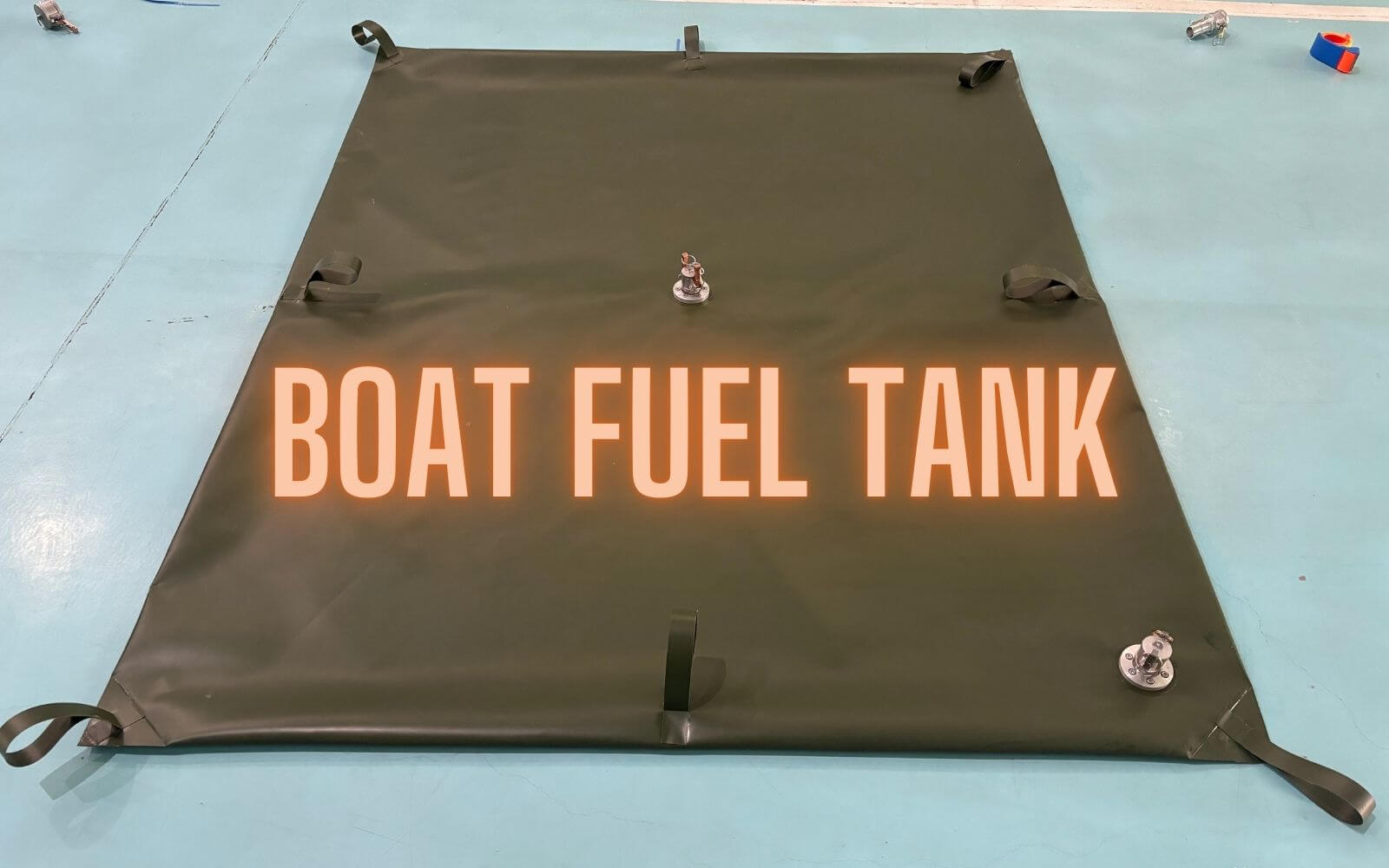BOAT FUEL TANK
Selecting the right fuel tank is critical for your boat’s performance, safety, and efficiency. With options ranging from rigid plastic to innovative flexible bladders, understanding the pros and cons of each type ensures you make the best choice for your marine needs. This guide compares all major fuel tank options with special attention to the growing popularity of flexible fuel bladders.
Traditional Boat Fuel Tank Materials Compared
Plastic Fuel Tanks
Rotomolded PE tanks dominate the recreational boating market due to their excellent corrosion resistance and moderate cost. These lightweight tanks won’t rust or react with ethanol-blended fuels, making them ideal for freshwater applications. However, their fixed shapes often waste valuable space in irregular hull compartments, and few manufacturers offer custom sizing options.
Flexible Fuel Tanks
In order to solve the troubles on the rigid PE tanks, the innovative flexible fuel bladders show on the market. The flexibility provides various advantages to fuel bladders. This feature makes the bladder folded and compacted into the tank when not in use. Also, the flexible tank means the storage tank with less weight.
Aluminum Fuel Tanks
The go-to choice for saltwater anglers, aluminum tanks provide superior durability in marine environments when properly coated. Their weldability allows for custom fabrication to maximize storage in odd-shaped bilge areas. While lighter than stainless steel, aluminum remains susceptible to galvanic corrosion if isolation systems fail. Many offshore fishing boats still prefer aluminum for its balance of strength and weight. But using the aluminum fuel tank, we should consider the leakage issues, the solution is easy by adding a flexible bladder inside.
Stainless Steel Tanks
ommercial vessels and luxury yachts often specify 316L stainless steel for unparalleled longevity. These tanks handle harsh marine conditions and last decades with proper maintenance. The significant weight penalty (about 3x heavier than plastic) limits their use to larger vessels where the added structural benefits justify the mass increase. Cost remains the primary barrier for most recreational boaters.
The Flexible Fuel Bladder Revolution
Modern flexible fuel bladders combine the best attributes of traditional tanks while solving their key limitations, like the heavy weight, leakage problems and customization on size and shapes. Constructed from military-grade TPU, these systems offer unique advantages:
Space Optimization
Unlike rigid tanks that force compromises in boat design, flexible bladders conform perfectly to uneasy reached spaces. This allows up to 30% more fuel capacity in the same footprint. Fishing boat owners particularly appreciate how bladders tuck into awkward stern compartments or under gunwales.
Weight Distribution Control
The ability to position multiple connected bladders helps maintain optimal trim as fuel burns. Some high-performance boats use this feature to dynamically adjust weight distribution by transferring fuel between compartments. And adding the foams into the fuel bladders help to decrease the flow rate inside the fuel tanks.
Impact Resistance
When properly installed with protective layers, flexible tanks absorb impacts better than rigid alternatives. Their ability to deform under load prevents the cracking that plagues plastic tanks in rough conditions. The U.S. Navy has used this technology for decades in combat vessels.
Installation Flexibility
Bladder systems install in hours rather than days, requiring no specialized welding or fabrication. Their modular nature simplifies retrofitting older vessels where traditional tank replacement might require deck removal.
Key Selection Factors
Fuel Compatibility
While most modern materials handle ethanol blends, verify manufacturer specifications. Flexible bladders often include additional chemical-resistant layers for diesel or aviation fuel applications, and the polyester TPU is compatible to various fuels, including the JP-8, kerosene, etc.
Venting Requirements
All tanks need proper venting, but flexible systems require special attention to pressure equalization. Look for integrated vent manifolds that maintain performance during temperature swings.
Accessibility
Consider service needs – rigid tanks allow full internal inspection, while bladders require less maintenance but offer limited visual inspection options.
Regulatory Compliance
Ensure any tank meets ISO, CE or other applicable standards. This is particularly important for flexible systems, where improper installation can void certifications.
Best Applications of Boat Fuel Tank for Each Type
Small Runabouts & Ski Boats
Pre-formed plastic tanks provide the most cost-effective solution for these typically sheltered applications. Their light weight helps maintain sporty performance. And the flexible fuel bladder can work also, providing a cost-effective fuel storage solution.
Offshore Fishing Vessels
Many captains prefer aluminum tanks for their proven saltwater performance, though modern flexible bladders are gaining acceptance, especially in tournament boats where weight distribution matters.
Sailboats
The low-profile nature of flexible bladders makes them ideal for sailboat installations where space is limited and heel angles affect fuel pickup.
Custom & Performance Boats
Builders of high-end custom craft increasingly specify flexible systems for their design freedom and weight management capabilities.
Why Marine Professionals Choose Flexible Bladders
The commercial fishing and workboat sectors have adopted flexible fuel systems for their:
Durability: Military-proven materials withstand decades of harsh use
Safety: Self-sealing technology prevents catastrophic leaks
Cost Savings: Lower installation and replacement costs versus metal tanks
Adaptability: Easy to reconfigure as vessel needs change
Making Your Decision
When evaluating options, consider:
- Your typical operating environment (protected waters vs. open ocean)
- Available installation space and access, if the customization of shape or size needed, then measure it and record it.
- Fuel type and any specialty additives used
- The fitting of the inlet amd outlet requested. And the position of the ports, if the customization involved.
- Budget over a 10-year timeframe
For most boaters upgrading older vessels or seeking maximum capacity, flexible bladder systems offer compelling advantages that traditional tanks can’t match. Their ability to utilize every cubic inch of available space while providing superior impact protection makes them the smart choice for performance-conscious mariners.








